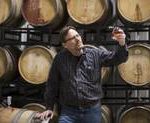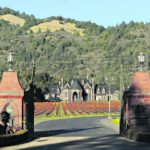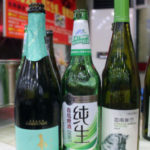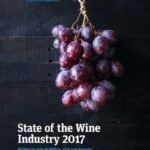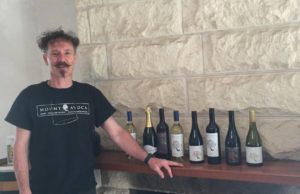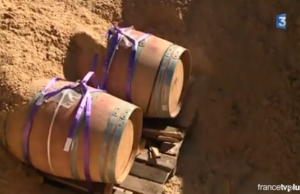Willcox, Arizona Wins Federal Designation as a Unique Wine Region
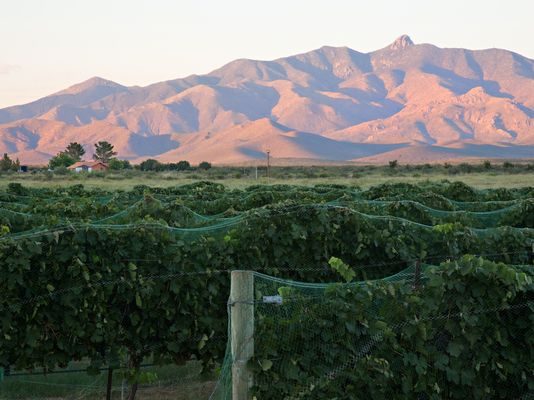
Willcox wins federal designation as a unique Arizona wine region
Willcox became Arizona’s second federally-recognized wine-growing region, formally known as an American Viticultural Area, a designation the area’s winemakers hope will increase the credibility of the region among oenophiles
The approval puts Willcox on the same national list of recognized viticultural areas that include Napa Valley, Calif., Paso Robles, Calif., and Willamette Valley, Ore.
“It’s a point of pride for the industry,” said John McLoughlin,the owner of Cellar 433 who spearheaded the three-year effort to get the recognition. “We’re designated. We’re doing this seriously.”
The designation, approved by a bureau within the Department of the Treasury, the Alcohol and Tobacco Tax and Trade Bureau, means the area was recognized as a unique region for growing grapes. Arizona’s first designated American Viticultural Area, Sonoita, was named in 1985.
The move was published in the Federal Register, the legal newspaper of the federal government, on Monday. Wineries can start using the AVA name on wine bottles 30 days after that publication date. Willcox can only be used on labels for bottles of wine made almost exclusively with grapes grown in the region.
McLoughlin said he envisions the name Willcox becoming more visible in the wine world, printed on wine lists at Phoenix-area restaurants and seen on shelves at grocery and wine stores.
Though many of the tasting rooms and tourism industry are in the Verde Valley, most of the state’s vineyards are spread through southeastern Arizona, just below the city of Willcox.
The area, according to the documents submitted to the Treasury Department, includes 21 vineyards. The bulk of the state’s grapes — more than two-thirds, according to the documents — are grown in the Willcox basin.
That was why McLoughlin said he started the push for the designation in 2013.
“The major growing in the state didn’t have an AVA,” he said. “It needed to be done.”
McLoughlin’s own Willcox vineyard is the largest in the state, providing grapes for wineries such as Chateau Tumbleweed and Page Springs Cellars, as well as his own labels, Arizona Angel, Fiddlebender and Bitter Creek Winery.
‘More than just a piece of ground’
McLoughlin said he learned a lot about the region while preparing the application. He likened it to the owner of a car reading the instruction manual after years of driving it and being surprised at all the features. He had already known the area was good for grape-growing, but he said the research let him know just how unique of a place it was.
“It was more than just a piece of ground,” he said. “It’s the weather, the soil, the climate and the weather patterns, all that wrapped up into one package.”
In the application for approval, prepared by Paul Hagar, a special projects manager at Cellar 433, the region is described as a closed basin, meaning no water flows into or out of it. The area gets its water from rain and underground aquifers, according to the petition.
The application traced the history of the region back to volcanic explosions 75 million years ago. It mentioned the first grapes grown in the area, by R.W. Webb in 1984, and the significant growth in vineyards over the past decade.
It described the unique challenges to growing grapevines in the region. The petition said growers “must manage leaf canopies carefully so that the fruit does not become sunburnt, while preventing the canopies from becoming so dense that the fruit does not reach optimum ripeness.”
The petition also discussed the unique soils, which it said are predominantly loams of sand, silt and clay. Typically, this type of soil is too rich for grapevines, producing an overly vigorous plant, but, the petition said, the heat in the Willcox area keeps the growth in check.
The petition further described how the summer heat makes leaves close up, delaying growth, until the beginning of the monsoon season when the cooler temperatures and moisture in the air cause the plants to open their leaves longer.
The petition was open for public comment from January to March. Two comments were received, one for and one against. The person against it said he was a rancher who was against seeing the character of the region change into a wine culture.
In addition, three vineyards within the Willcox AVA — Arizona Stronghold, Zarpara and Asmundson Family vineyards — sent letters in support.
The government’s website noted the designation is not an endorsement for the quality of the grapes grown there. It does mean no winery can use Willcox as part of its name unless the wine it makes comes largely from grapes grown in the region.
There are no wineries currently using the Willcox name, although there are trademarks and corporations registered with the state of Arizona that contain the name.
Gallifant Cellars, based in Peoria, owns a corporation called Willcox Winery, with an address in downtown Willcox. Owner Gavin Gallifant said his business owns the downtown property, but does not operate a winery there. He said he is planning on selling the building and the name.
The rule only applies to wineries. It would not affect the Wines of Willcox, run by Thomas Johnson, that creates winery maps and maintains a website aimed at promoting the region.
‘A unique and special place for wine grapes’
Rod Keeling, the president of the Arizona Wine Growers Association, said the Willcox designation marks a further step in Arizona being recognized as a legitimate wine-growing world.
“It has a quality connotation,” Keeling said. “The government has said (that) this is a unique and special place for wine grapes.”
Keeling said the effect on consumers is more subtle. Seeing the name Willcox on bottles, rather than the more generic Cochise County, gets the city name in front of wine fans. It might make them consider visiting, Keeling said, or make the more adventurous think about investing in the city.
“It’s one more of those incremental changes that are necessary for community improvement and development,” he said.
Keeling opened his Keeling-Schaefer Vineyards tasting room in 2010 in a bank building in downtown Willcox. At the time, his was the only tasting room in the downtown. He’s since been joined by three more, Carlson Creek Vineyard, Flying Leap Vineyards and Aridus Wine Company. And vineyard owners in the area south of the city are readying blueprints for bed and breakfasts and elaborate tasting rooms.
“It’s one more of those incremental changes that are necessary for community improvement and development,” he said.
Keeling said he has seen a 20 percent increase in sales at his tasting room every year since it opened. Admittedly, he said, that is an increase from not very much, but an increase all the same.
Still, he sees the possibility for Willcox to become like Cottonwood. That city, south of Sedona, has seen wine tasting rooms open on its Main Street, which had been abandoned. Weekends in Old Town now see sold-out hotels and bustling restaurants.
Keeling said the viticultural designation can help propel downtown Willcox in a similar direction.
“We’re not a truck-stop town,” he said. “I believe it has the potential to be a pretty interesting place.”
McLoughlin agreed, envisioning a lively tourism boom in downtown Willcox.
“I truly believe Willcox will be the major wine region in the state,” he said.
By , AZCentral.com


